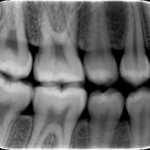 The pacifier debate can be controversial among parents. When is the right time? The truth is, there is an age that is best for a child to quit the pacifier! So, read a little bit about the appropriate age and the reasons, then make the change.
The pacifier debate can be controversial among parents. When is the right time? The truth is, there is an age that is best for a child to quit the pacifier! So, read a little bit about the appropriate age and the reasons, then make the change.
At about the age of two years, dentists may advise you begin to wean your child off of the nuk or pacifier. At this age, a lot of growth is occurring with your childs palate. These plates are expanding and beginning to create the shape they will have for the rest of their life. The pacifier can begin to make the palate high an narrow, increasing your childs chances of needing expensive orthodontic work in the future. Sometimes these orthodontic procedures may even include a palate expander. Aside from the dental considerations, there are other reasons to wean your little one off of their pacifier. Studies have shown that extended use of pacifiers can be related to delayed or incorrect speech, swallowing problems, and can even prevent a child from developing coping skills during stressful situations.
Any parent who has gone through it knows that weaning is easier said than done! But, before you consider putting it off, remember the negative outcomes that can come from extended pacifier use. So, here are some tips and suggestions that some moms we know how used:
*Make a trade. Tell your child that when they are ready, they can pick out a new book or toy in exchange for their pacifier.
*Poke a pin hole in the rubber part of each pacifier. This will make the sucking sensation less enjoyable and they may desire to have it less.
*Leave the pacifiers under their pillow for the “pacifier fairy”. When they wake up, there will be a special note and surprise waiting for them.
*Make it a slower transition. At or before the age of two, start limiting access to pacifiers to only nap and bed time. Avoid it during the day, in the car and when you’re out and about. Make the child aware of all the “big boys” and “big girls” they see that do not have a pacifier. Then, take them away during naps, then eventually during night time.
Whichever strategy you use, remember that your child is giving up a symbol of comfort. Be patient, be understanding, but stay strong. There comes a time every child has to let go, so just remember that this is only for his or her own good. In the end, the benefits will outweigh the tears and hard nights.


 We have all had bitewing x-rays. You know, two x-rays on each side that help us detect cavities between the teeth. But, did you know that we also check for the level of your jaw bone, nerve size, margins of existing fillings and even large pieces of build up? That’s right! We get all that information from 4 little pictures.
We have all had bitewing x-rays. You know, two x-rays on each side that help us detect cavities between the teeth. But, did you know that we also check for the level of your jaw bone, nerve size, margins of existing fillings and even large pieces of build up? That’s right! We get all that information from 4 little pictures.